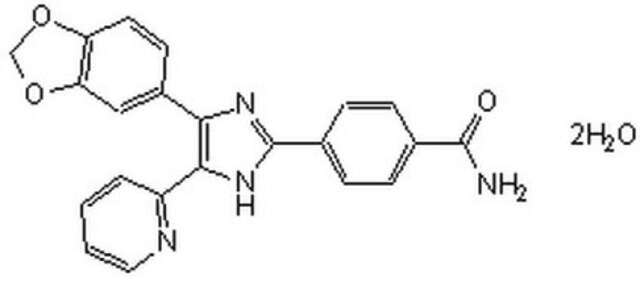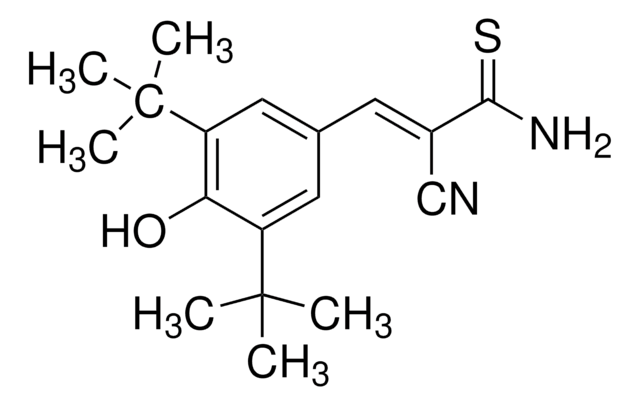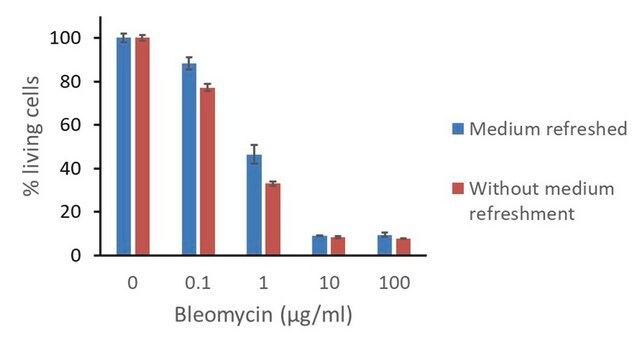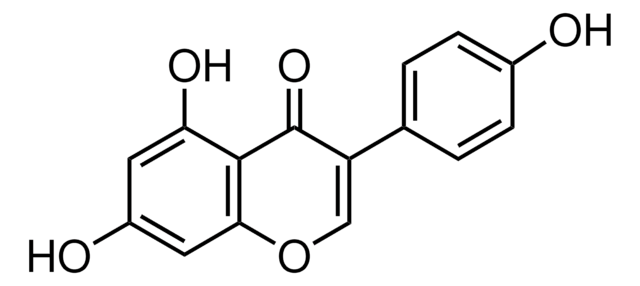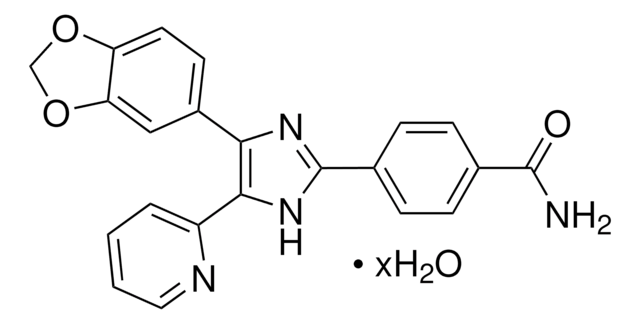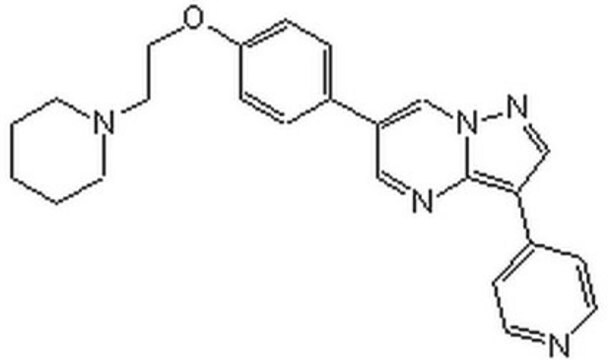S8822
SB-525334
≥98% (HPLC), solid, ALK5 inhibitor
Sinónimos:
6-[2-tert-butyl-5-(6-methyl-pyridin-2-yl)-1H-imidazol-4-yl]-quinoxaline
About This Item
Productos recomendados
product name
SB-525334, ≥98% (HPLC)
Análisis
≥98% (HPLC)
formulario
solid
color
yellow
solubilidad
DMSO: ≥20 mg/mL
emisor
GlaxoSmithKline
temp. de almacenamiento
2-8°C
cadena SMILES
Cc1cccc(n1)-c2[nH]c(nc2-c3ccc4nccnc4c3)C(C)(C)C
InChI
1S/C21H21N5/c1-13-6-5-7-16(24-13)19-18(25-20(26-19)21(2,3)4)14-8-9-15-17(12-14)23-11-10-22-15/h5-12H,1-4H3,(H,25,26)
Clave InChI
DKPQHFZUICCZHF-UHFFFAOYSA-N
Aplicación
Acciones bioquímicas o fisiológicas
Características y beneficios
Código de clase de almacenamiento
11 - Combustible Solids
Clase de riesgo para el agua (WGK)
WGK 3
Equipo de protección personal
dust mask type N95 (US), Eyeshields, Faceshields, Gloves
Certificados de análisis (COA)
Busque Certificados de análisis (COA) introduciendo el número de lote del producto. Los números de lote se encuentran en la etiqueta del producto después de las palabras «Lot» o «Batch»
¿Ya tiene este producto?
Encuentre la documentación para los productos que ha comprado recientemente en la Biblioteca de documentos.
Los clientes también vieron
Nuestro equipo de científicos tiene experiencia en todas las áreas de investigación: Ciencias de la vida, Ciencia de los materiales, Síntesis química, Cromatografía, Analítica y muchas otras.
Póngase en contacto con el Servicio técnico